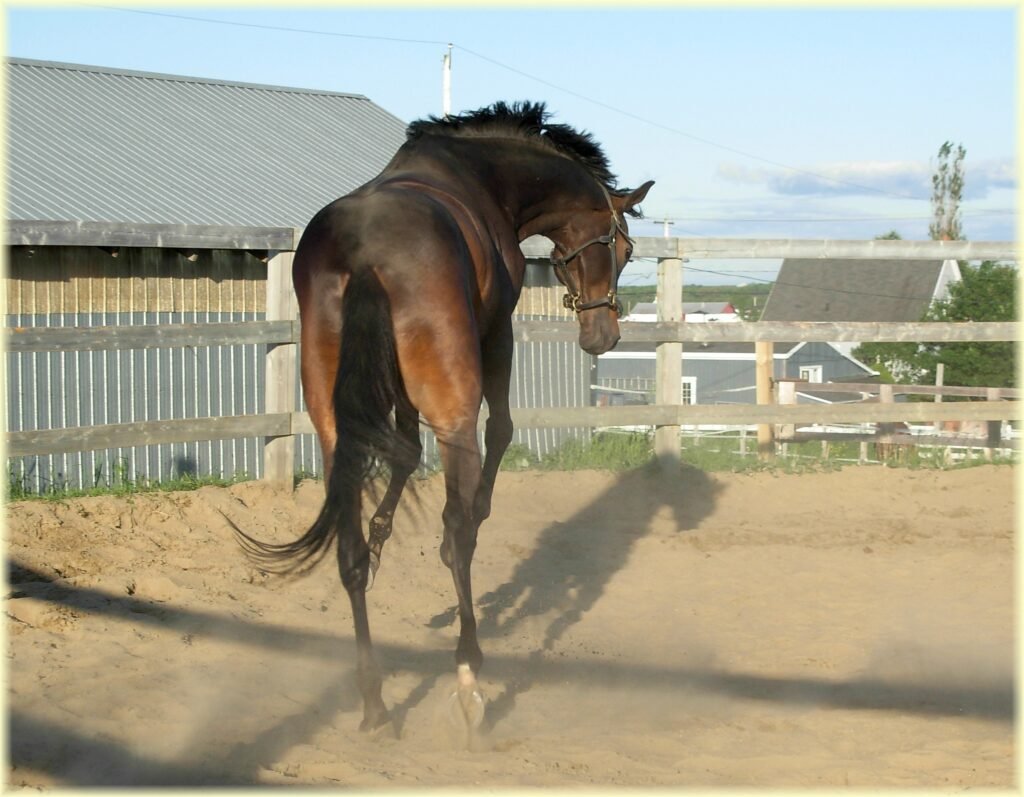“Horses are scared of just two things,” goes the saying. “1. Things that move. 2. Things that don’t.” Funny, yes, but also frustratingly true.
It’s not the horses’ fault, of course. As a prey species, they evolved to stay alive by staying alert–and ready to run to safety. Their motto is, “Go first; figure it out later.”
Some horses are spookier than others, depending on inborn personalities and past experiences. If your horse is of the more-reactive variety, here are three training strategies to help him go from spook to Steady Eddie.
1. Plastic magic. OK, it’s not actually magic, but desensitizing your horse with a plastic bag can work wonders to dial down his spook-o-meter.
“A plastic bag is a ‘triple threat’ to a horse—an unknown object that moves and makes noise,” says clinician Clinton Anderson. “That makes it an especially good desensitizing tool.”
Simply tie a ripped-open bag to the end of a training stick and put your horse in a halter with a long lead. Start by waving the bag in the air around your horse, gradually bringing it closer to him as he becomes accustomed to it.
Move on to rubbing the bag all over his body, using the stick to scratch him in his favorite spots. Over time, advance to snapping the bag in the air over his back, then finally flapping the bag on his body, and even rubbing his face with it.
As your horse gets increasingly comfortable with the bag, you’ll even be able to rub it gently over his face. When he reacts, keep at it until he stops momentarily, then immediately remove the bag and give him a break. That’s how he learns the bag won’t hurt him.
This desensitizing works with horses of any age.
2. Clipper calming. Because they’re strange and noisy and potentially snakelike, clippers are a common spook item. Clinician Julie Goodnight recommends an advance/retreat approach to gently desensitize your horse to clippers.
“It programs relaxation and acceptance into your horse’s behavior,” she says.
Simply present the clippers to your horse in stages, slowly, removing them promptly each time he shows a sign of acceptance: relaxing muscles, lowering the head, releasing a breath, showing interest in the clippers.
3. Have a ball. Clinician Tommy Garland says you can teach any horse—especially a timid, anxious, or spooky one—to be calmer and more relaxed by using a large, air-filled ball as a training tool. The ball’s size, shape, and rolling action will startle a horse at first, but they also activate his natural curiosity, which works in your favor.
Once your horse learns the ball won’t hurt him and he can make it roll by bending a knee, he begins to enjoy rolling it—then following after it and making it move again.
“I’ve never had a horse that didn’t react this way with the ball,” says Tommy, who used this tool with a hot-tempered, super-spooky Half-Arabian mare. (It changed her so much she went on to win a reserve champion title at a national show.)
Ultimately, if you desensitize your spooky horse to as many stimuli as possible, you’ll be delighted with the results. (The fact that you’re spending all that time with your horse and building the bond of trust and communication between the two of you is part of what makes these strategies work.)
Featured Image credit: Lucie Provencher from Québec, Canada, CC BY-SA 2.0, via Wikimedia Commons
